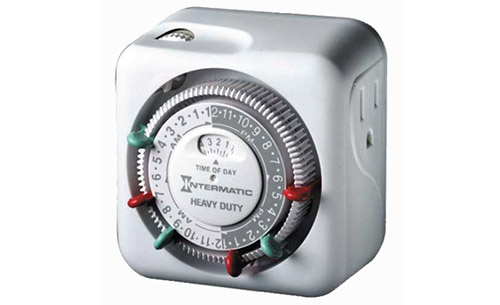

The number of home automation products that offer to control our homes is ever expanding. From bulbs to switches, thermostats to appliances and locks to irrigation systems, the myriad products available continues to explode. In this new monthly article, I will review these products, their functionality and services through the unique lens of a shomer Shabbat consumer, and explore the intersection of tradition and cutting-edge home technology. Welcome to the Internet of Things (IoT) for the observant home.
The appliance market was early to recognize the need for specialized technology and functionality for the Shabbat observant home. Shabbat-mode refrigerators/freezers, ovens and warming drawers have all become commonplace in the appliance market. Star-K has created a certification process where they approve specific models that adhere to their standards and provide their trademarked Star-K certification that one would previously only associate with kosher food products. Recently, my family opted for a warming drawer that had a Star-K certification rather than a significantly less expensive model that had a Shabbat mode but was not certified. The non-Jewish but knowledgeable sales person described the uncertified model to us as “problematic” in the traditional halachic sense. Manufacturers have recognized the buying power of the observant home and have invested in the technologies that accommodate Jewish traditions. Consumers, in turn, have rewarded these manufacturers by purchasing these often higher-priced items. The objective of this series is to create a forum for observant consumers of these new automation products as well as to raise the awareness of the manufacturers to both the needs and the purchasing power of the Shabbat-observant consumer.
One can argue that shomer Shabbat families were the early pioneers of home automation. Many of us grew up with timers decades ago. Having timers for light switches or in-wall air conditioners was common for most of us. For me, part of the Erev Shabbat to-do list always involved programming these switches. One of the challenges faced was re-setting the timer each week as Shabbat times changed. On the first Shabbat after daylight saving time it was rare for our timers to be in sync and we often ate in the dark for at least an extra hour. Each of these switches was also completely independent so changes needed to be made individually for each switch. This was a time-consuming task with a less-than-easy interface. Because of these challenges, many homes limited the number of timers they would use. Instead of having a tiфmer in a bathroom one might opt for a night light, etc.
Newly available home automation technology addresses many of these limitations and offers new and improved functionality at ever-improving price points. The shomer Shabbat market is therefore ripe for home automation. At the same time, many manufacturers are building functionalities that are not easily compatible with observance. Work-arounds or modifications will need to be implemented to make them suitable for the observant home. We will explore these implementations and workarounds each month. I look forward to my first review next week (I can’t wait a whole month) of a home lighting automation implementation for Shabbat and Yom Tov. Please feel free to submit feedback and questions to [email protected] and follow TribeTechReview on LinkedIn, Facebook and Twitter.
By Dov Pavel
Dov Pavel is a tech enthusiast who is not affiliated with any of the companies whose products he reviews. The opinions he expresses are solely his own. Dov is not a halachic authority. Readers should consult their own rabbi as needed. Dov lives in Teaneck with his wife and three children.










